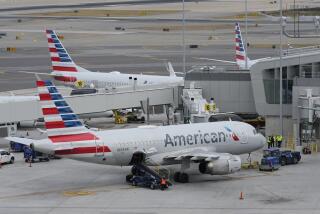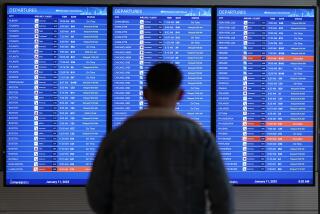Airlinesâ revenue from fees has almost doubled since 2008, study finds
The worldâs largest airlines collected an estimated $21.46 billion in passenger fees and other extra revenue last year, about double the amount collected in 2008, according to a new study.
For some airlines, revenue generated from extra fees, the sale of frequent flier points and commissions for booking passengers into hotel rooms and rental cars now represents between 15% and 30% of all airline revenue, according to the report by IdeaWorks Co., a Wisconsin consultant on airline fees, and Amadeus Corp., a Madrid technology company for the travel industry.
The annual report released Tuesday said 47 airlines worldwide reported some type of ancillary revenue last year, compared with only 23 airlines in 2007.
When fuel prices hit record-high levels in 2008, many airlines began to add extra fees to check luggage, order Wi-Fi service or upgrade to a seat with more legroom, among other charges.
But the airline industry continued to add such fees during the recession and has relied heavily on the revenue to offset another increase in fuel prices that began earlier this year.
âThe airlines are really grabbing at this as a lifeline during very difficult times,â said Jay Sorensen, president of IdeaWorks.
United Airlines and Continental Airlines, which have merged into one company but operate as two airlines, reported a combined $5 billion in ancillary revenue in 2010, the most for any airline, followed by Delta Air Lines with $3.7 billion and American Airlines with $1.9 billion, according to the report.
But the fees represent a bigger portion of the overall revenue for discount airlines. For example, the fees and commissions represent 29% of total revenue for Las Vegas-based Allegiant Air, 23% for Florida-based Spirit Airlines and 22% for Dublin-based Ryanair, the report said.
More to Read
Inside the business of entertainment
The Wide Shot brings you news, analysis and insights on everything from streaming wars to production â and what it all means for the future.
You may occasionally receive promotional content from the Los Angeles Times.










